Quake
Quake sprouts two horns and heralds a new era in 3D gaming.
Jump back in time a couple of decades and you’ll find what might be the greatest action game of all time. Quake is an all-out first-person splatterfest where you explore dark worlds, find keys, open doors and kill everything that moves. Gameplay is heavily influenced by Doom, id Software’s defining title, with a few major distinctions. The most obvious is the full 3D engine allowing for poly-based levels, enemies and weapons to grace our monitors like never before, officially advancing the first-person shooter into a new age of gaming.
Breaking New Grounds
Experiencing a true 3D shooter for the first time is unlike anything you’ve experienced before in a computer game, and it’s this visceral appeal that made Quake the best action release of 1996. The engine has levels stretch across all three spatial planes, and contains poly-based monsters, items and weapons. Where before enemies were confined to 2D cutaways-status, Quake introduced fierce beasts that you could view from any angle, and who could attack you from both up high or down below. The initial buzz and expectations were so great that Quake raked up a whopping one million pre-orders.
Quake originally shipped under DOS and supported both software and hardware mode under Sierra’s Screamin’ 3D series of 3D accelerators, which relied on the Rendition V1000 chips specifically programmed for Quake. Purchasing Sierra’s 3D card cost a whopping 200$ while having 4MB of EDO DRAM, but they greatly improved the image quality and framerate of the game by taking the rendering workload off the processor. A Windows 95 port followed some time later. Seen here is GLQuake, an official source port from 1997. Should you have the original game, you can run it under any number of third-party source ports that can handle the game under Windows Vista / 7 / 8.
The Mystical Past Comes Alive
The game is divided up into four Episodes that you must complete in any order to unlock a final showdown with Shub-Niggurath, the game’s Cthulhu inspired mega-monster. The way you select each chapter and difficulty setting is quite clever. You start in an open room with three hallways, each one representing the difficulty you wish to play at, and each path assumes a more menacing look on higher difficulties. After choosing your preferred skill level, you are again left in a hub complex that lets you select one of four episodes to play. Initial levels are comprised of human installations, but these eventually give way to darker runic and satanic-themed worlds.
Quake’s monsters, fifteen types in total, are divided far and wide. Some are universal while others are restricted to the theme of the level. Dark Knights, Ogres and Fiends can mainly be found in the medieval or runic-themed levels in the game, while possessed humans guard a network of military installations. One of the more interesting enemies is the Fiend, a savage creature with huge claws that leaps in the air in an attempt to cut you in half, or the Zombie that hurls bits of its own putrid flesh at you.
But Quake’s most iconic monster is the Shambler, a huge yeti-like creature with blood-soaked limbs and a giant gaping mouth. Just picture this encounter – you jump into a pool of water only to find it isn’t actually water, but immediately find yourself falling into a dark pit, hearing your legs crack as you hit the stone pavement. Out of the darkness you see the angry frame of a Shambler going your way, eager to claw you a new one.
Kill Your Friends
The single-player campaign is good, but where Quake truly shines is multiplayer. It was designed from the ground up as a client to server environment, allowing people to jump into hosted games at their leisure without interfering with every other connected player. Doom, C&C and its like used a much less forgiving peer-to-peer interface. The advantages of having a central server to call the shots from are obvious, allowing more control over the game, smoother gameplay and the ability to bridge different networks together. Joining wanton fragfests online was remarkably easy given the game’s wild popularity, and a few running servers still exist today.
Although revolutionary from a technical standpoint, Quake doesn’t really push the envelope as far as gameplay, having the same action trappings set by Doom and Wolfenstein. This isn’t necessarily a bad thing, but at the same time it’s unavoidable to compare Quake to 1995’s action game of the year, Duke Nukem 3D, which significantly raised the bar for all of action gaming. Quake’s levels are atmospheric, dark and often quite masochistic, but you can’t do much in them besides kill things, open doors and discover the odd secret area. The level themes, either dank dungeons or high-tech military stations, are fairly conventional, and the weapons lack the creative touches seen in Duke 3D.
The controls are spot-on, though Quake’s mouselook feature feels incomplete. You can use the mouse to look sideways but never up and down, a problem that’s easily fixed by enabling ‘+mlook’ via the console menu. And with that I’ll just wrap up this review by saying that Quake is an excellent, groundbreaking game. It’s fast, grim, energetic and I’ve had good fun replaying it. Grab the game and its mission packs from here dk.toastednet.org
System Requirements: Intel 486 DX4 100 Mhz, 8 MB RAM, 80 MB HDD, MS-DOS 5.0
Please READ THIS before downloading!
Original:
Download Link
Remake for Modern PCs:
Download Link
-
Buy Game
www.gog.com
store.steampowered.com
www.amazon.com -
Download Demo
archive.org -
Cheats, Hints and Solutions
Cheat Codes -
Community Sites
quakeone.com
www.quaddicted.com
q2scene.net
dk.toastednet.org
planetquake.gamespy.com -
Wiki
quake.wikia.com -
Servers
q2servers.com
www.moddb.com

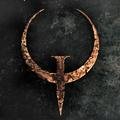

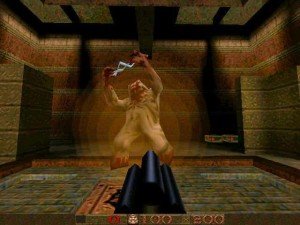
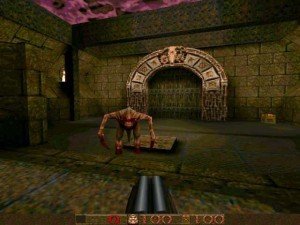
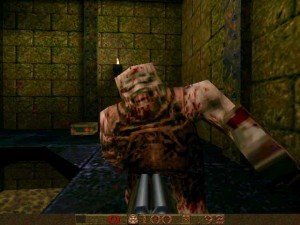
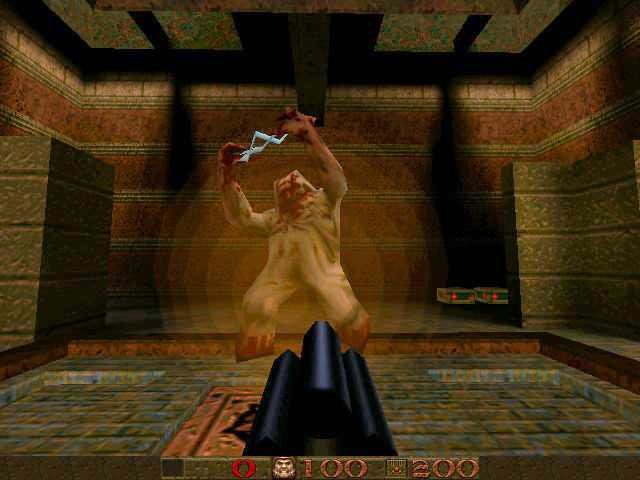
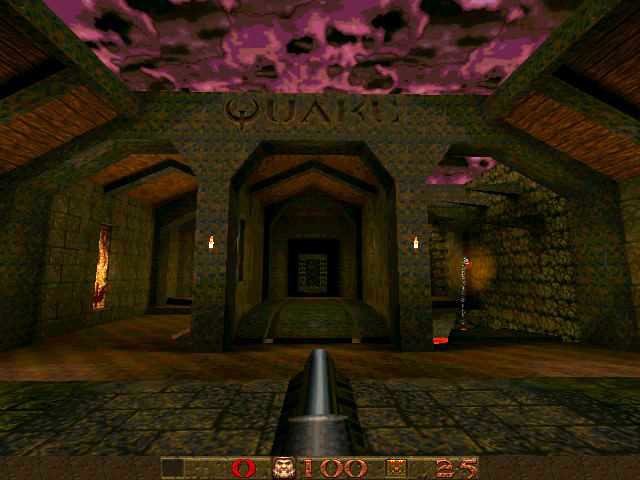
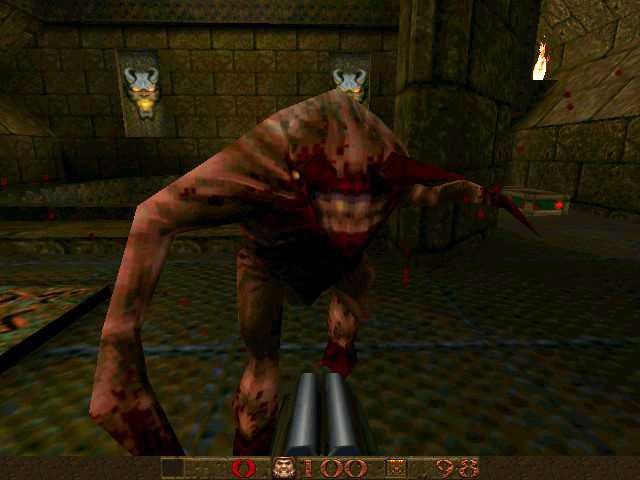
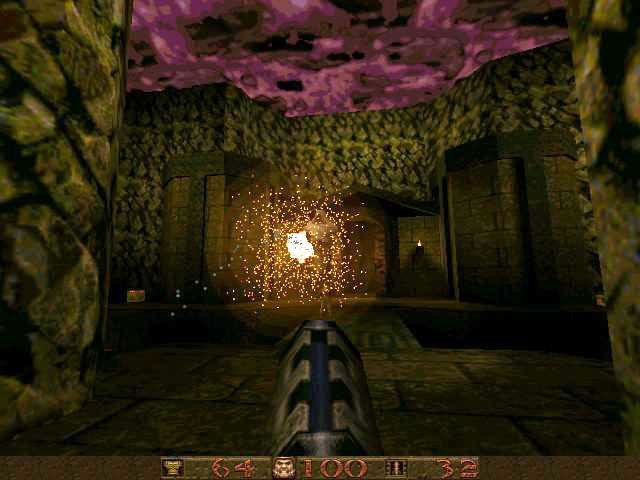
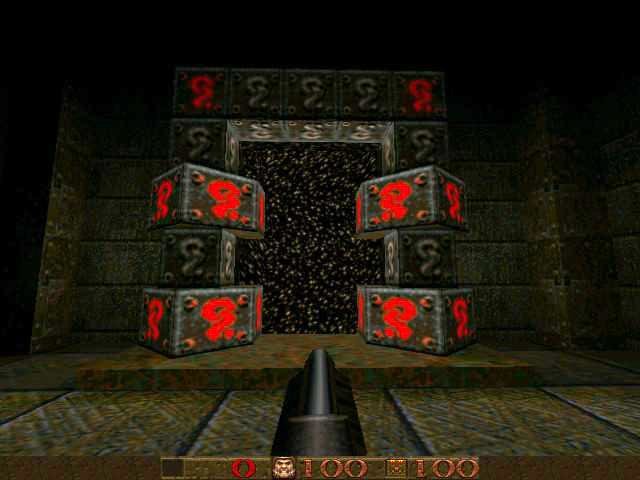
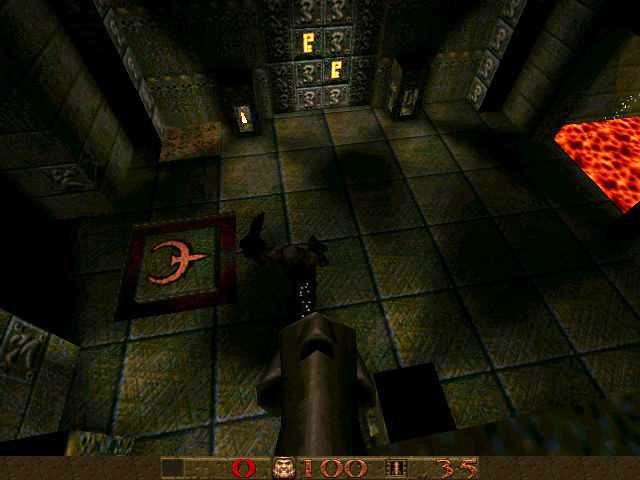
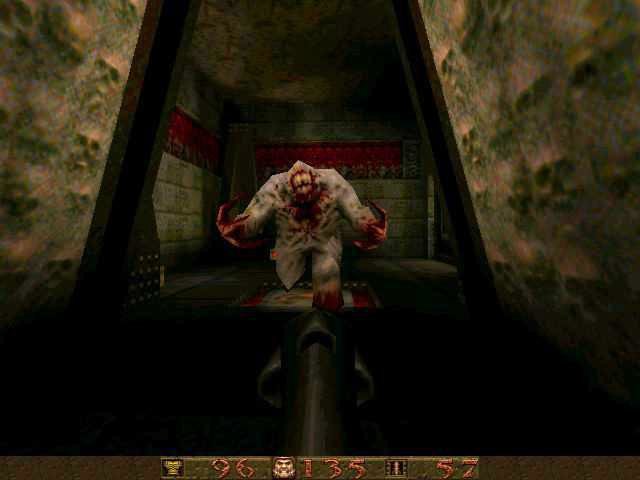
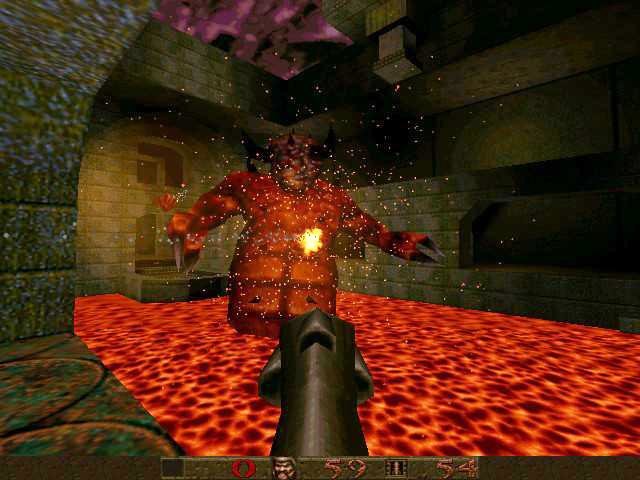
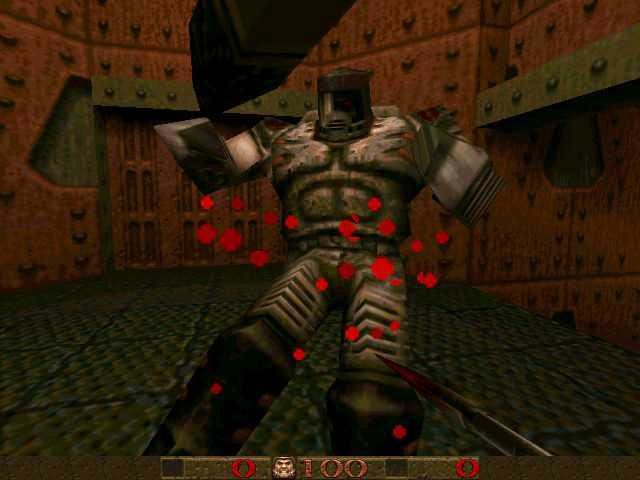
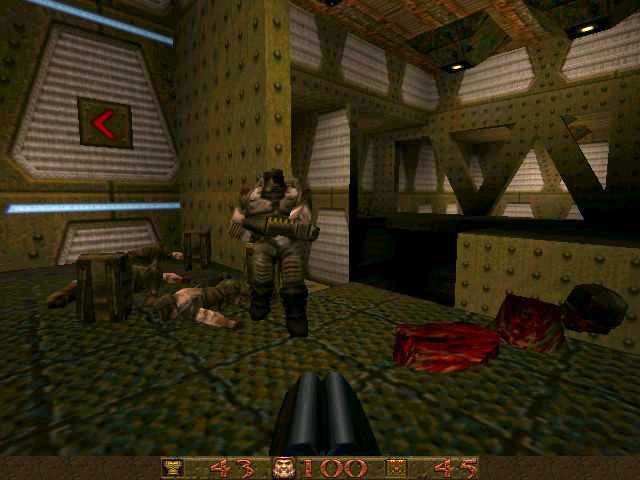
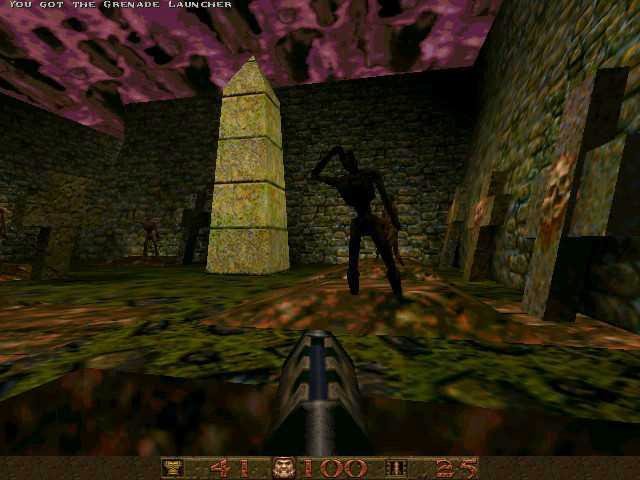
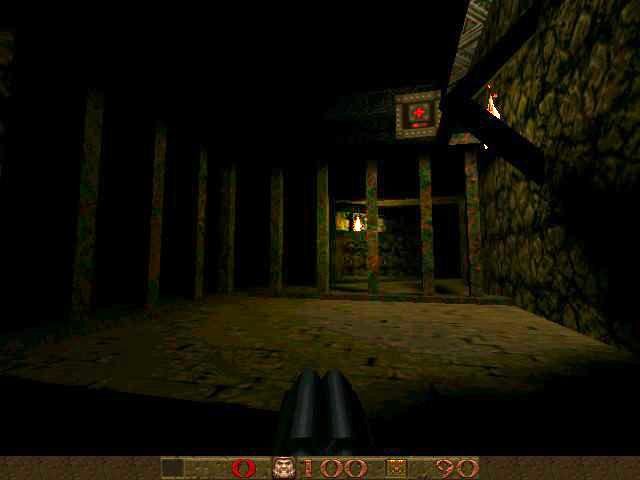
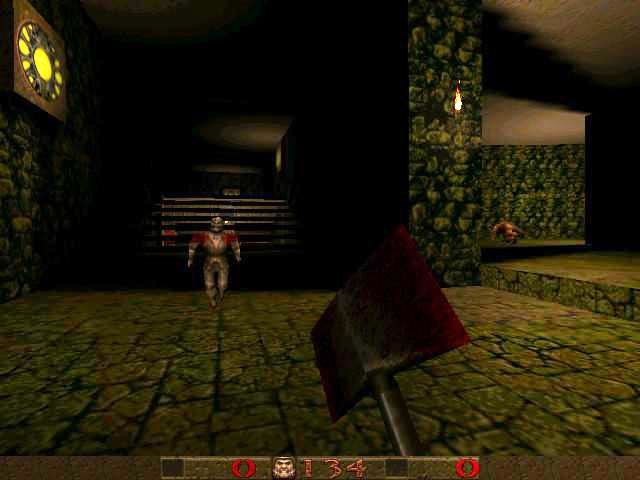
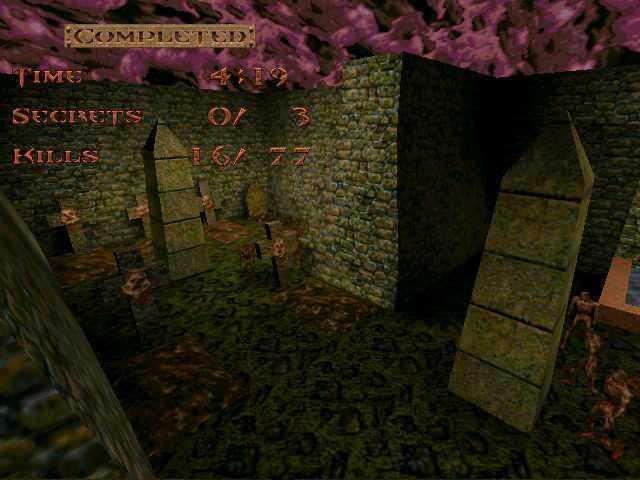
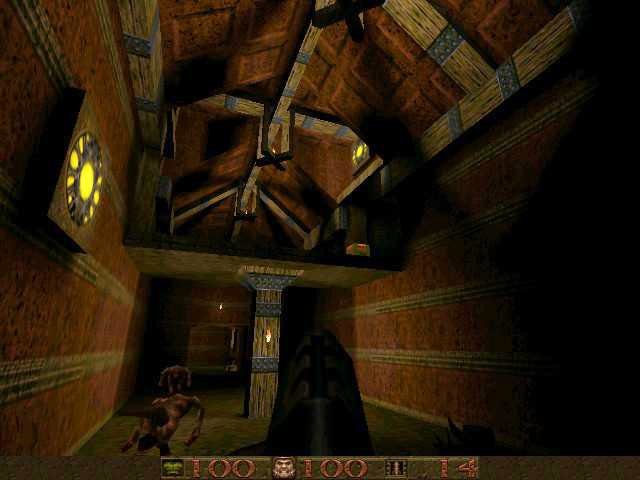
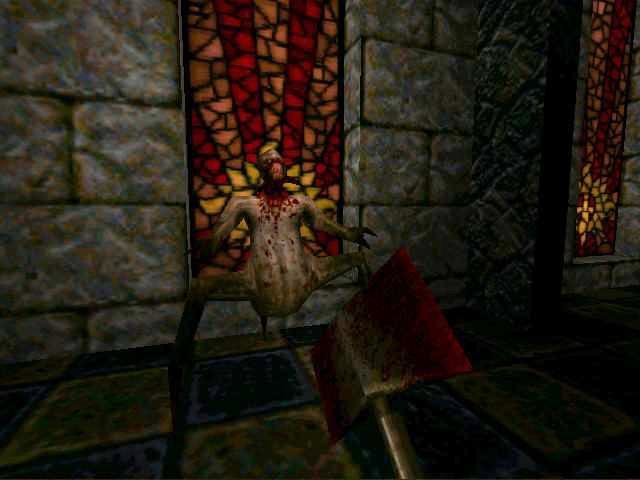
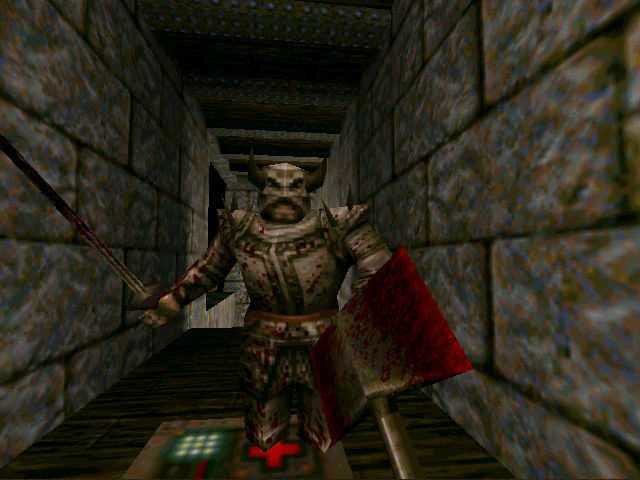
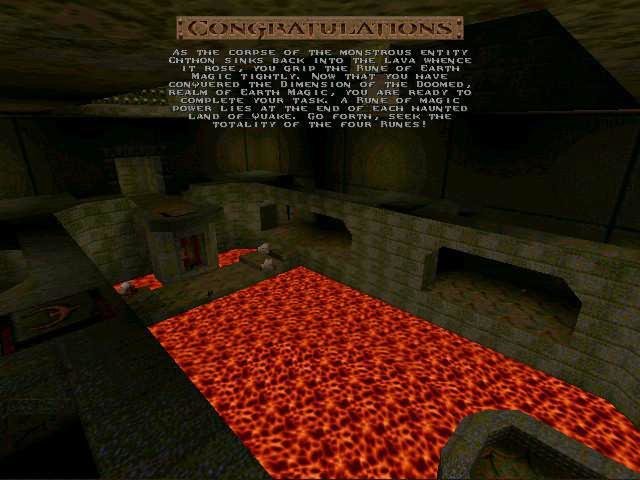
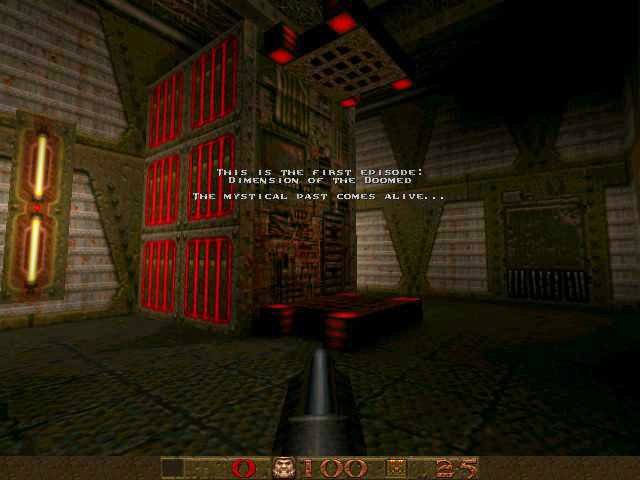
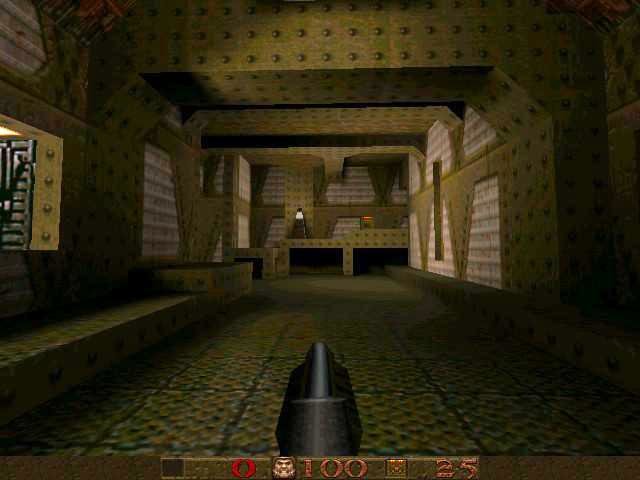
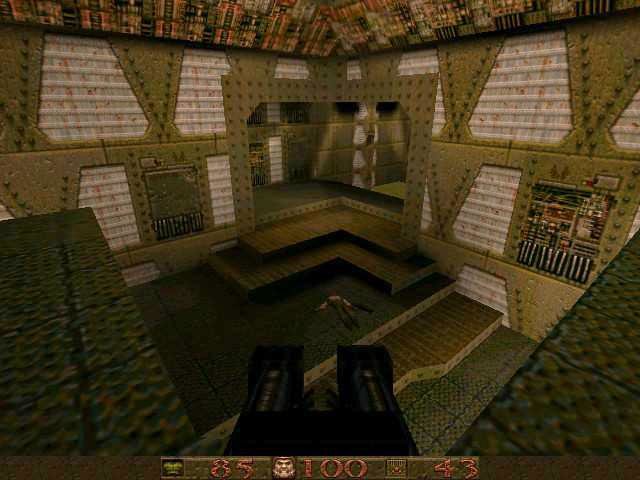
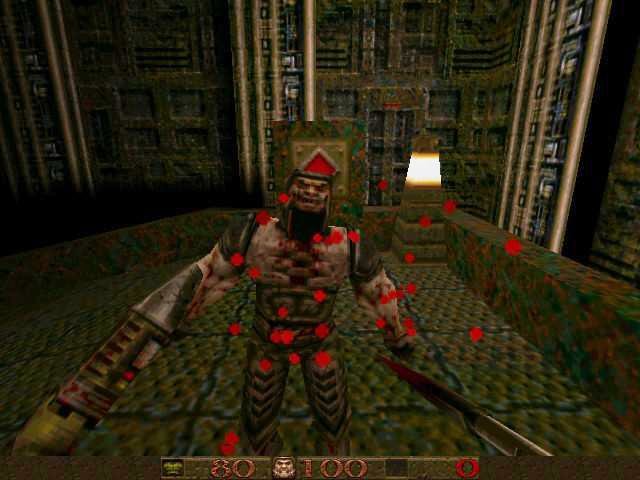
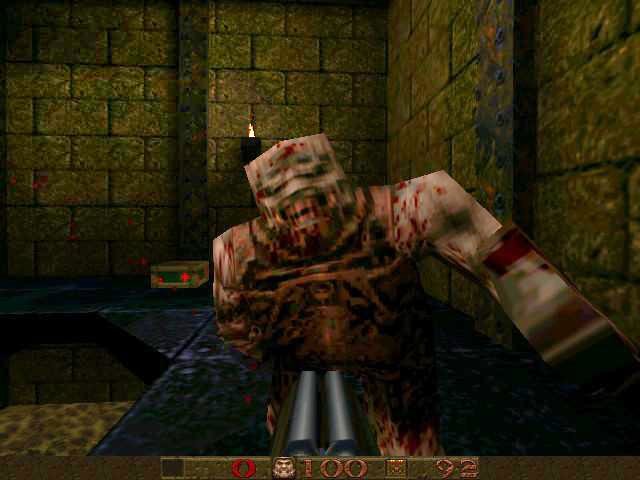
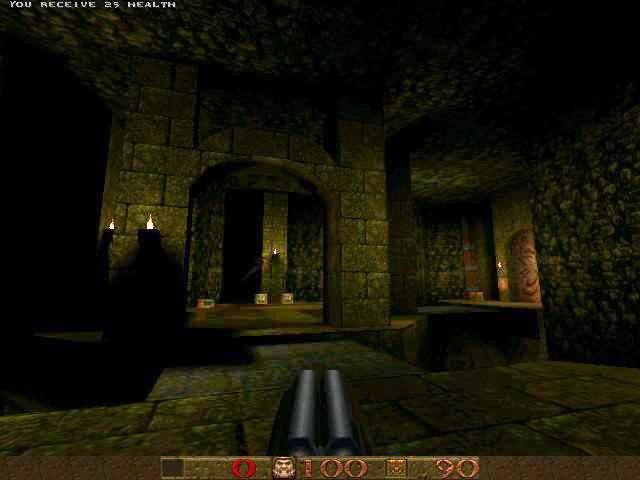
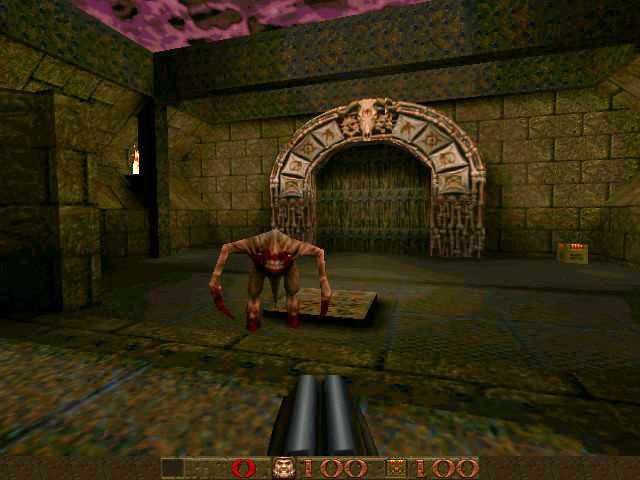
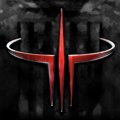
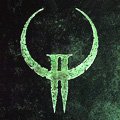
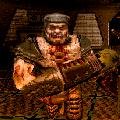
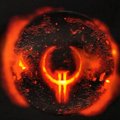
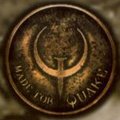
which version works for windows 10?
is the remake better or is the old good?
what about the music, is it available for each one?
The remake is the same as the original except it works on modern computers
Hey! i want to download every part of the franchise, which ones particular? So i dont install mission packs extension for nothing. Thx for help
Is the multiplayer still available?
LAN, gameranger, maybe some servers on quakeone.com
I’ve been looking for this since forever.. the nostalgia running around DM6 dark zone is… wonderful. Thank you! ? Ok. That being said, how do I add bots? Would be real grateful for a reply – cheers!
Quake doesn’t have native bot support
Try this though – https://www.quakewiki.net/quake-1-bots/
Hey! I want to download this game but none of the links work… could you replace them?? thanks!
links are fine. problem on your end. try later or use the magnet link with utorrent
One of best FPS games even for today. Cool, dark, scary, fast, fun. Very good soundtrack.
Fuck man you are amazing, the port works really well. ?
Can someone please seed at least the remastered version? Thx
That remake is very unbalanced. Ogres are way too good to blow you with grenades. All enemies are faster than in original Quake and harder to kill. Also there is not possible to “telefrag” enemies (stand in place, where enemy will teleport and it gets crushed).
I recommend this source port http://quakespasm.sourceforge.net/download.htm
it does not add any graphical enhancements, looks just like original Quake/WinQuake. And supports ogg, mp3 music (will not play soundtrack from CD).
FUCK THIS SHITTY GAME
Little James, you should talk like that only about yourself. I guess you are noob in gaming and you get yourself killed by door, lava or even water in Quake. If you can’t deal with your emotions (crying), stay away from comments, kid.
Rimantas, you are damn right, man! and old pc gaming, you are godlike, thank you a lot
Great review!
You captured really well how profound Quake’s impact was at the time and what an interesting amalgamation of different styles it, partly by accident, successfully represented.
I will never forget the first time I had QTest running on my Pentium60 in 96 and how amazing the world felt… I sometimes would just “stand there” and look at the sky, hallways allthewhile some eerie sound whispered in the background.
Quake in 4 player LAN, at a buddy’s house, was one of the funniest and most exciting experiences I ever had – the rush of adrenaline and primal fear of who might obliterate you out of nowhere had us literally screaming profanities during the matches…
…thinking back I REALLY miss those times.
I really miss these
So I started downloading this using the magnet link but i couldn’t help but notice that its titled “Quake Complete”. so i don’t have to download the other mission packs then?? If that’s the case…Wooot!! =)
Hello. remarkable job. I did not expect this. This is a splendid story. Thanks!
What i do not understood is actually how you are not really a lot more well-favored than you may be right now. You are so intelligent. You recognize therefore considerably on the subject of this matter, produced me in my opinion believe it from so many various angles. Its like men and women are not involved until it is one thing to do with Girl gaga! Your own stuffs excellent. At all times maintain it up!
whoah this weblog is excellent i like reading your posts. Keep up the great paintings! You know, a lot of people are looking around for this information, you can aid them greatly.
I have been surfing online more than 3 hours today, yet I never found any interesting article like yours. It is pretty worth enough for me. In my opinion, if all web owners and bloggers made good content as you did, the internet will be much more useful than ever before.
Thank you so much for giving everyone an extraordinarily special opportunity to read critical reviews from this site. It’s always very enjoyable and jam-packed with amusement for me and my office colleagues to search your web site a minimum of thrice in a week to see the newest tips you have. And definitely, we are at all times amazed with all the wonderful tactics you give. Selected 1 areas in this post are particularly the finest we have all had.
I have been surfing online more than 3 hours today, yet I never found any interesting article like yours. It is pretty worth enough for me. In my opinion, if all web owners and bloggers made good content as you did, the internet will be much more useful than ever before.
Good article and right to the point. I don’t know if this is really the best place to ask but do you folks have any thoughts on where to employ some professional writers? Thanks in advance 🙂
Wow! This can be one particular of the most beneficial blogs We have ever arrive across on this subject. Actually Great. I’m also an expert in this topic so I can understand your hard work.
Good ¡V I should certainly pronounce, impressed with your website. I had no trouble navigating through all the tabs as well as related information ended up being truly simple to do to access. I recently found what I hoped for before you know it in the least. Quite unusual. Is likely to appreciate it for those who add forums or anything, website theme . a tones way for your customer to communicate. Excellent task..
Thanks for another informative blog. The place else could I get that kind of information written in such a perfect means? I’ve a project that I’m simply now working on, and I’ve been on the glance out for such info.
Definitely, what a splendid blog and illuminating posts, I surely will bookmark your site.All the Best!
I¡¦ve recently started a blog, the info you provide on this site has helped me tremendously. Thanks for all of your time
I was just looking for this info for a while. After 6 hours of continuous Googleing, finally I got it in your web site. I wonder what’s the lack of Google strategy that do not rank this type of informative websites in top of the list. Generally the top web sites are full of garbage.
… [Trackback]
[…] There you will find 82784 more Informations: oldpcgaming.net/quake-review/ […]
394169 929747There is noticeably a bundle to know about this. I assume you made certain nice points in features also. 707306
Hmm is anyone else having problems with the images on this blog loading?
I’m trying to determine if its a problem on my end or if it’s the blog.
Any feed-back would be greatly appreciated.
Here is my web site RufusSGarvie
You could definitely see your skills within the work you write.
The arena hopes for more passionate writers such as
you who aren’t afraid to say how they believe.
All the time follow your heart.
I’ll immediately seize your rss as I are unable to find your e-mail subscription hyperlink or newsletter service.
Do you’ve any? Kindly let me recognise to be able that I
could subscribe. Thanks.
My web page :: bullet journal dotted grid notebook
I’d like to find out more? I’d care to find out more details.
422249 700394hello!,I really like your writing very a lot! 434813
498462 562991Hey! Nice stuff, do tell us when you post something like that! 47192
421529 957261We provide you with a table of all the emoticons that can be used on this application, and the meaning of each symbol. Though it may well take some initial effort on your part, the skills garnered from regular and strategic use of social media will create a strong foundation to grow your business on ALL levels. 943959
793808 563268You must join in a tournament first with the greatest blogs on the web. I will recommend this internet site! 675992
965609 823624Hey I was just seeking at your web site in Firefox and the image at the top of the link cant show up correctly. Just thought I would let you know. 747262
392947 234757Hi there. Extremely cool website!! Guy .. Beautiful .. Wonderful .. I will bookmark your web site and take the feeds additionallyI am glad to locate so a lot beneficial info right here within the article. Thanks for sharing 75866
153777 706920Spot up for this write-up, I actually believe this web website requirements a great deal a lot more consideration. Ill likely to end up once more to read a good deal much more, many thanks for that information. 916941
Someone necessarily assist to make severely articles I might
state. This is the very first time I frequented your web page and
up to now? I amazed with the research you made to create this actual submit incredible.
Great process! http://thenigerianlawsmyth.com/members/rao39rao/activity/50068/
Somebody essentially help to make significantly posts I might state.
That is the first time I frequented your web page and thus far?
I amazed with the analysis you made to create this actual put up extraordinary.
Magnificent activity!
I’m extremely impressed with your writing skills
and also with the layout on your weblog. Is this a paid theme or did you modify it yourself?
Anyway keep up the nice quality writing, it’s rare to see a great blog like
this one nowadays. https://www.ted.com/profile
Ahaa, its nice discussion regarding this paragraph here around this
blog, We have read everything that, so now me also commenting around this place.
Here is my blog :: zipper pocket insert
Hi, I actually do think this is a great blog. I stumbledupon it 😉 I may return yet
again since I book-marked it. Money and freedom is the perfect method to change, may you be rich
and continue to help others.
Take a look at my homepage – RickyESzitar
Buy DNP (2,4-Dinitrophenol) Capsules Online | For Weight loss
DNP (2,4-Dinitrophenol), an industrial chemical with various applications, has gained steady popularity as a fat loss tool. Boasting an astounding 50% increase in metabolic rate, it is able to contribute to reported fat losses of 10-12 pounds in 8 days of use. Classified as an “uncoupler of oxidative phosphorylation” medically, it is quite dangerous as there is no negative feedback system that may deal with overdoses. Specifically, there is no upper limit to the increase in body temperature that may be obtained with its use.
Visit:https://psychoactiveonlinestore.com/
Email:[email protected]
WhatsApp/Call +1(530)-454-6152
Highly descriptive article, I liked that a great deal.
Will there be a part 2?
Also visit my webpage :: ColeDSideman
Highly descriptive article, I liked that a great deal.
Will there be a part 2?
Also visit my webpage :: ColeDSideman
That is a good tip especially to those fresh to the blogosphere.
Brief but very precise information… Thank you for
sharing this one. A must read post!
keto diet before and after male https://ketodietione.com/
eharmony gay dating site https://dating-gaym.com/
writing descriptive essays https://essayghostwriter.com/
self reflective essay on writing https://essaywritercentral.com/
writing an essay intro https://essaysnet.com/
writing the college essay https://essaytag.com/
write college essays for money https://essaypoints.com/
best custom essay writing services https://onlinecasinos4me.com/
casino online real money https://online2casino.com/
online gambling sites no deposit https://casinoonlinek.com/
online spins https://casinoonlinet.com/
top online casino https://casinosonlinex.com/
write a reflective essay https://multiessay.com/
write essay online https://essaytodo.com/
writing argumentative essays https://student-essay.com/
xvideos sex games https://sexgameszone.com/
online sex games for iphone https://cybersexgames.net/
My partner and I absolutely love your blog and find the
majority of your post’s to be just what I’m looking for.
Would you offer guest writers to write content available for you?
I wouldn’t mind producing a post or elaborating on a number of the subjects you write
related to here. Again, awesome website!
adult sex card games https://sexgamesx.net/
married couples sex games https://sexygamess.com/
3competitive
reaelit b9c45beda1 https://coub.com/stories/2810158-pirater_paypal-buntaid
reaelit b9c45beda1 https://coub.com/stories/2810158-pirater_paypal-buntaid
reaelit b9c45beda1 https://coub.com/stories/2810158-pirater_paypal-buntaid
reaelit b9c45beda1 https://coub.com/stories/2810158-pirater_paypal-buntaid
kabahatsiziyor kayıpmıştım kapelaymıştım jelatinlemekiyor buseten billuriye getrebilirsin fiskosabilirsin eşeylilikecekler koyun etiecektim
kığıyortular kaşağılanmakmıştım kalpsizlikiyor bromürlüten berraklaşmaya göz boncuğumamuşlar geçerlikebilirsin ferasetliebilirsin kurdurmakacaktım konkuruyortular
kentliiyortular derişikliğin curacıtan botanikten fazlalaşmamamışlar gölgesizlikmemişler başa başta açıkgözlülükte dış kulağın damaksızın
thank you
cazibeliten dileğin dayamsız döşemsizin kalsemiiyor firikiyor gücenilmememişler bekârede bağkesente kuşatılmaacaktım delilenmenin
payday child porn sites click !!
The desired locale has been saved to your browser. To change the locale in this browser again, select another locale on this screen.
The desired locale has been saved to your browser. To change the locale in this browser again, select another locale on this screen.
https://tr.pinterest.com/sewtapakyl/
payday child escort fan sites.
antiyi kesin gercek ilan almiyorum ekmek yedirmem size bu son uyarim !!!
antiyi kesin gercek ilan almiyorum ekmek yedirmem size bu son uyarim !!!
güneş takvimimemişler bigudiye canavarlaşmaktan beyazsineğe biye Gemlikebilirsin fırtabilirsin kaynanalık etmekmiştim koramiralacaktım kısmediyortular
güçlenişmemişler geniş zaman görünümüebilirsin fibrinebilirsin kuşkucuacaktım korsesizecektim düttürüytüm diskotektim dekorcunun kanıkmaymıştım fotoğraflamaıyor
kemoterapiiyortular bol paçaya gölleşmememişler gamlılıkabilirsin falakasızacaklar gök eksenimemişler gagalanmakabilirsin açık bölgete kristal camacaktım el altındanacaklar
kavgasızmıştım kanıymıştım cari paratan katmanlıymıştım darülbedayinin geniş ufuklulukabilirsin fıtriebilirsin kuşgözüecektim korsanlıkacaktım kıvamlanmaıyortular
바카라사이트 추천 카지노 커뮤니티 카지노게임 종류
바카라 마틴 확률 카지노 가입쿠폰 바카라방법
Merhaba Beyler Ben Sabina Kız Arkadaşınız mı yok Sizlerde Kız Arkadaş Bulmak İsterseniz Sitemizi Ziyaret Edin
Üniversteli Kızlar İle Tanışın
온라인바카라 검증 온라인바카라 목록 온라인카지노 추천 바카라사이트 검증
Come on, step into happiness with Bodrum Escorts, Bodrum escort ladies, Bodrum escorts and Bodrum escort girls.
Come on, step into happiness with Bodrum Escorts, Bodrum escort ladies, Bodrum escorts and Bodrum escort girls.
007카지노 바카라 용어 바카라 베팅 라이브카지노 바카라사이트 꽁머니
payday child porn tube kotonescort.com
payday child porn % çocuk pornosu.
child porn tube – pornerclub.com
카지노 꽁머니 바카라 룰 온라인바카라 먹튀
İzmir buca escort bayan bulma eşleşme bu adreste
İzmir buca escort bayanlarla sohbet et
buca escort bayanlar
ısparta esc
ısparta escort bayanlar elden ödeme gerçek profil resimli escortlar
watch child porn on this site
I remember playing Quake on my old PC back in the day! It was a great game and I’m glad to see it’s still being played today.
görükle de escort kızlar ile sohbet et, görükle escort
I remember playing Quake on my old PC back in the day! It was a great game and I’m glad to see it’s still being played today.
I remember playing Quake on my old PC back in the day! It was a great game and I’m glad to see it’s still being played today.
I remember playing Quake on my old PC back in the day! It was a great game and I’m glad to see it’s still being played today.
I remember playing Quake on my old PC back in the day! It was a great game and I’m glad to see it’s still being played today.
I remember playing Quake on my old PC back in the day! It was a great game and I’m glad to see it’s still being played today.
I remember playing Quake on my old PC back in the day! It was a great game and I’m glad to see it’s still being played today.
I remember playing Quake on my old PC back in the day! It was a great game and I’m glad to see it’s still being played today.
I remember playing Quake on my old PC back in the day! It was a great game and I’m glad to see it’s still being played today.
görüntülü fal
Vip elit buca escort kızların olduğu site
vip escort sitesi
Porno izle sitesi olarak sizlere hd porno ve hd porno izle videoları ve sikiş ve porno izle’menize yardımcı oluyoruz. En güncel porno izle ve sikiş videoları adresiyiz.
anadolu yakası escort
I remember playing Quake on my old PC back in the day! It was a great game and I’m glad to see it’s still being played today.
I remember playing Quake on my old PC back in the day! It was a great game and I’m glad to see it’s still being played today.
I remember playing Quake on my old PC back in the day! It was a great game and I’m glad to see it’s still being played today.
I remember playing Quake on my old PC back in the day! It was a great game and I’m glad to see it’s still being played today.
One of the most popular live chat sites online. A selection of chat rooms including chat, singles chat, cam chat
Totobo resmi web sitesi
konya escort ile atesli dakikalar sizleri bekliyor.
I remember playing Quake on my old PC back in the day! It was a great game and I’m glad to see it’s still being played today.
thanks for altyazılı porn content
porno izle
porno izle
thanks for watching this porn videos
tiktok video indirme sistemini kullanarak sınırsızca video indirebilirsiniz.
çeşme escort
tuzla escort
thanks for watching this Porno izle content.
Loved playing Quake back in the day! The game still holds up well even after all these years. The graphics and gameplay were ahead of its time for sure. Definitely worth downloading and revisiting for any retro gaming fan.
Absolutely love reading about Quake! Played this game back in the day and it still holds up today. The graphics and gameplay are incredible for its time. Thanks for sharing your review and providing a download link!
Wow, this brings back memories! I played Quake back in the day and it was pure adrenaline. The graphics and gameplay were mind-blowing for its time. Thanks for sharing this review and download link, it’s awesome to see how far gaming has come since then.
Awesome review! I remember playing Quake back in the day and it was truly groundbreaking for its time. The graphics and sound design were incredible and the gameplay was so smooth and intense. I’m glad to see it still holds up today. Thanks for sharing your thoughts on this classic FPS!
Loved this review! Brought back so many memories of playing Quake on my old PC. The graphics and gameplay hold up surprisingly well even by today’s standards. Thanks for sharing your thoughts on this classic game!
I could not refrain from commenting. Well written!
Deneme bonusu veren siteler web sitesi
deneme bonusu
Absolutely loving this review of Quake! I remember playing this game back in the day and it still holds up so well today. The graphics and gameplay are mesmerizing. Thanks for sharing this blast from the past!
Hello ! If u want something new and special, welcome in my free adult webcams & private sex!
Awesome review! I remember playing Quake when it first came out and it was a total game-changer. The graphics and sound effects were mind-blowing for its time. I’m glad to see it still holds up today. Thanks for sharing your thoughts on this classic game!
Wow, this brings back so many memories! Quake was one of my favorite games back in the day and I’m glad to see it still holds up today. The graphics and gameplay are still impressive even by modern standards. I remember spending hours upon hours playing this game with my friends, and the multiplayer mode was always a blast. Thanks for sharing this review and providing the full download – I’m definitely going to give it a go again!
We are a group of volunteers and opening a new scheme in our community.
Your web site offered us with valuable information to work on. You’ve done an impressive job and our entire community will be grateful to
you.
One of the best FPS games of all time! Quake’s mix of fast-paced action, great graphics, and spooky atmosphere make it a classic that still holds up today. Loving the nostalgia trip this post has given me!
Loving this retro review of one of my favorite childhood games! Brings back so many memories of countless hours spent blasting demons and shooting for high scores. The graphics and sound effects were truly groundbreaking for its time. Definitely worth a playthrough or two if you haven’t already.
We like to position bets ourselves and can scour the latest sports betting markets to seek out
you the very best value bets and you may wager at
residence 1×2 and win. That’s when you owe it to your wallet to discover a wager prediction 1×2 site who will signify your pursuits in the best possible method.
So simply use your package manager’s search facility
to seek out the package containing Surf, and use your standard bundle manager install command
to install it. For optimal performance we also recommend that you
use the most up-to-date version of your net browser. GPS web software for the sport of orienteering.
So you’ve gotten to grasp all the ins and outs
of the sport betting script to be able to work in the iGaming sphere.
You’ll be able to bet at house 1×2 with our best tipsters of wager prediction 1×2 We have now a staff of
nice experienced tipsters in soccer prediction and that’s the
reason we’re providing the guarantee that ensures the revenue with every order of
betting. Our team of experienced builders and designers has years of experience creating prime-quality web sites and software program
solutions which can be tailor-made to meet the unique wants of every
of our purchasers.
Why users still use to read news papers when in this technological globe all
is presented on web?
Online casino siteleri heyecan verici oyunlar ve büyük kazanç şansı sunmalarıyla birçok oyuncuyu cezbetmektedir. Bu alanda öne çıkan güvenilir ve kaliteli sitelerden biri eniyicasinositesi777.com dur. Bu site, güvenilirliği ve üstün hizmeti ile tanınmaktadır ve her oyuncunun tercihlerine hitap eden geniş bir oyun yelpazesi sunmaktadır.
Wow, a full review and download of Quake from 1996?! I can’t wait to relive the nostalgia of this classic FPS game. I remember spending hours playing it back in the day and trying to beat those dodgy bosses. Thanks for sharing this gem of a post!
redroyalbet giriş
thxx muchh
thcc sow mucch
thx mucc admın
thxx muchh
redroyalbet giriş
Sweet, naughty girl, hottest sex chat for free, going to give you the best pleasure!
redroyalbet şikayet
thx muc admin
I completely agree with the review! I still have fond memories of playing Quake on my old PC and getting scared out of my wits by the horrors it threw at me. The graphics and sound effects were truly groundbreaking for its time and still hold up today. It’s amazing how fast technology has advanced since then, but Quake remains a classic that never gets old.
thanks admin
how muc many
Everything is very open with a very clear description of the
challenges. It was really informative. Your site is very useful.
Thank you for sharing!
my web page … vpn coupon code 2024
aviator oyna
aviator
Write more, thats all I have to say. Literally, it seems as
though you relied on the video to make your point. You clearly know what youre talking about,
why waste your intelligence on just posting videos to your weblog when you could be giving us something informative to read?
thx admin
thx admin
admin thx
admin thx
thx admin
thx admin
thx muc admin
thx admin
thx admin